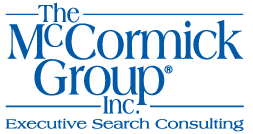In an article for the National Law Journal, McCormick Group Managing Principal Steve Nelson weighs in on the rising billable rates and alternative fee structures.
By Katelyn Polantz | January 5, 2015
The price of a billable hour has risen by more than 10 percent in four years, as large corporate law firms focused on their most expensive work and saved clients’ money elsewhere.
“The question is: Is anybody paying that?” Maurice Watson, chairman at Husch Blackwell, said, looking back at hourly rates charged last year for lawyers. Husch’s average rate for partners is about $449 per hour, the firm told The National Law Journal in response to our 2014 billing survey. But $407 is closer to what the firm collects for its work.
The former number represents the “rack rate,” Watson said, while the lower price factors in discounts given to clients on the billable hour and in alternative billing arrangements.
Husch’s fees are indicative of the pricier billable hour and complementary cost cuts that law firms find for clients. The Kansas City, Mo.-founded firm was among the firms that have reported their rates to The National Law Journal since 2010. Almost all of the highest- and lowest-charging partners among the firms increased rates since 2010.
Partners’ hourly prices at the 40 firms that reported their numbers in 2014 now hover around $500 an hour on average. The highest-billing partner among the survey came from Kaye Scholer, with a $1,250 rate. The lowest-billing partner, from Frost Brown Todd, made $220, the firms told the NLJ.
The NLJ billing data also includes rates collected from public records — mostly bankruptcy filings — for 128 additional firms during the past three years.
Although the rates charged have gone up in recent years, the amounts that clients pay have not kept pace with inflation, legal industry leaders say.
“I think the story of billing rates is no longer as full or clear as it once was,” Watson said.
Lawyers often give discounts on their stated rates, or firms arrange alternative fee plans with clients, including caps on fees, retainers or other flat rates for legal work. Still, firms lean on hourly pricing more than any other model. Generally, 15 percent to 20 percent of work comes from alternative fee structures, according to Steve Nelson of the McCormick Group Inc., a legal consulting firm in Northern Virginia.
Dinsmore & Shohl, a Cincinnati-based firm, has changed the way it sets rates instead of ditching the billable model.
“The billable hour is still very important. There’s probably 100 reasons for that,” firm chairman George Vincent said.
Dinsmore opened an office in Washington in 2011, so billing rates for lawyers in the nation’s capital notched higher than at the rest of the firm. At the same time, associates faced a shift away from rates that rise in lockstep to individualized pricing, Vincent said. Dinsmore also has added nonpartner-track associates to cut some fees. The firm’s lawyers charged between $590 and $175 in 2010, but they ranged between $850 and $160 in 2014.
The spread shows a rate expansion that mimics the decisions made by other firms — increases for top earners while squeezing value where they can.
Associates, on average, charged $306 an hour at 28 firms in the NLJ study in 2014, an increase of 12 percent from those firms’ average rate four years previously. The most expensive associates’ rates pushed up at about the same pace, while a number of firms increased their lowest-paid associates’ rates by only $15 or less an hour.
The deleveraging of lawyers in the industry may account for this. Many clients now refuse to pay for legal work performed by first-year associates, Nelson said. Associates instead train during their first year, or work on pro bono or the equivalent of clerk and paralegal tasks. Outsourcing some work to cheaper consultants and firms plays into the pricing models more every year.
Many large firms are shedding lower-end practices, which fueled partners’ lateral moves in 2014, Nelson added. Large firms now often mandate that partners meet or exceed certain rates. Some practices become priced out, so the lawyers move to less strict or lower-tiered firms to keep their clients. Practices that work on large corporate mergers or high-stakes litigation saw less lateral movement because of rate pressure. Gibson, Dunn & Crutcher, with an $1,800 hourly rate for Theodore Olson, an outlier, had the highest rate the NLJ could find in public records.
The billing rate story was different in bankruptcy matter To read the rest of the article, go to | National Law Journal To contact Steve Nelson, go to | Steve Nelson Image source | National Law Journal


